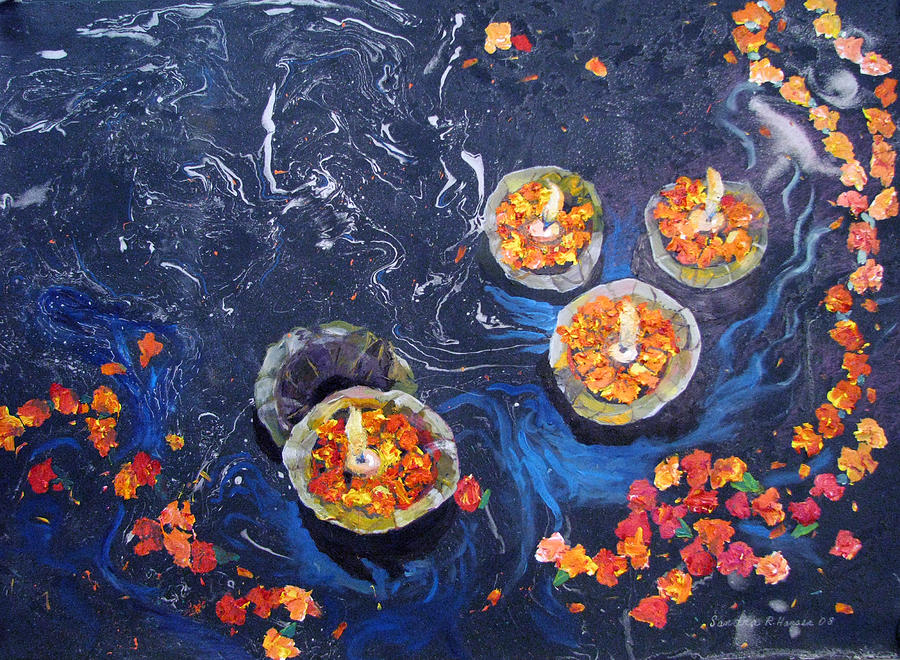It’s not uncommon to feature the dead in artwork, or consider them in artistic writing, or even just hold them in our frequent thoughts. The deaths of loved ones or even just fellow human beings can be tragic events that change the course of the future for those who still live. Yet, in the most recent warp wire lecture, I was reminded of a platform of communication with the dead that hasn’t traditionally been held as “artful.”

The Ganges is a trans-boundary river of Asia that travels through India and Bangladesh. It has a rich history of interaction with the dead, and the concept of death–but is it artful?
The river embodies many sacred traditions and cultural aspects for Hindus, whom bathe along the river whilst praying to their ancestors and gods. It’s thought that the Ganges descended from heaven to earth, so it’s also the vehicle from earth to heaven. Cremations are held on the Ganges banks, and ashes are submerged into it for the souls salvation.

This isn’t a traditional display of art. But there is a certain degree of artistic consideration begged by this long-held display of communication and reverence for the dead. It matters significantly to many people and their culture, which is the same case for art itself. Traditions represent art as much as paintings do, and this artistic display embodies much of the character of the people who hold the Ganges in such high respect.

